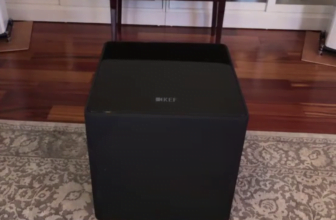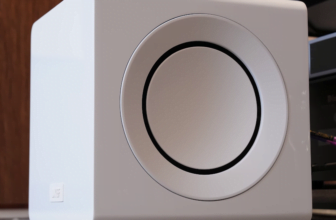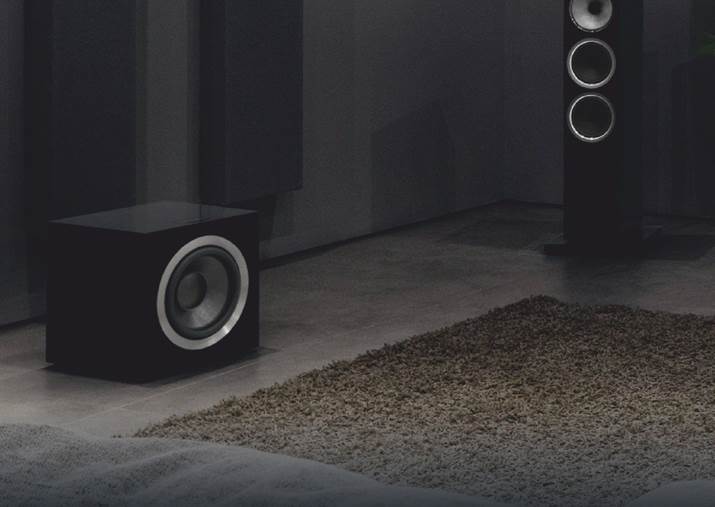REL S/510 Review – REL sub designed for double trouble?
One subwoofer or two? With the aid of REL’s smallest Serie S model, Steve Withers ponders life’s eternal home cinema question. Read our REL S/510 Review.
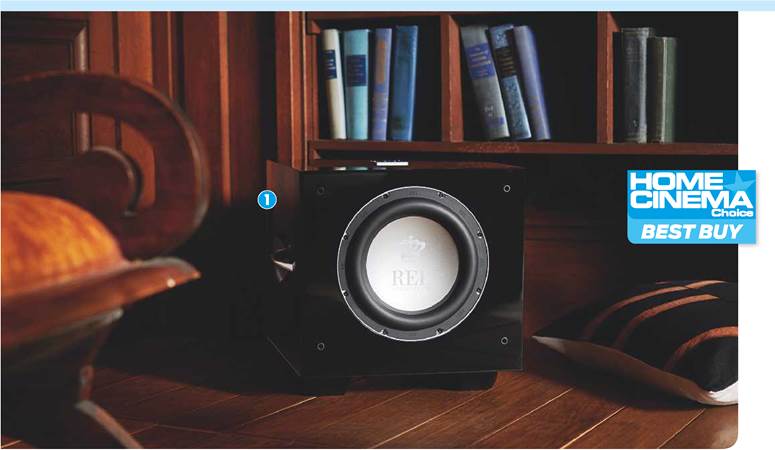
WHEN IT COMES to subwoofers, there’s always a temptation to assume bigger is better. If you’re the kind of person who favours bass so boisterous that neighbours demand an anti-social behaviour order, larger drivers and increased amplification seems like the obvious solution. But is it?
Entry-level in Serie S, above Serie Ti and Serie HT models
SVS SB-3000; Bowers & Wilkins DB3D; GoldenEar SuperSub X
REL has long advocated the use of multiple subs, and while the company’s recently upgraded Serie S range has taken this philosophy to the extreme, with the option of a six-unit line array composed of three stacked subs on either side (see p72 for more on that), there are benefits to using dual subwoofers.
For a start, installing a pair of smaller subwoofers instead of a single large one can be more practical when space is an issue. The use of two subwoofers also results in increased headroom and greater dynamic range, along with making it nearly impossible to localise the source of the bass.
A single subwoofer also can’t deliver optimal frequency responses at every listening position in a room. If you want to have fun one day, play a low-frequency test tone and move around your movie den. At certain points the bass will sound boomy, but at others you’ll hear it go eerily quiet. This is because the sub interacts with the room, creating standing waves with peaks and nulls. You can use modern room calibration systems to equalise these to a degree, but employing two subwoofers helps smooth things out at more listening positions.
To put this theory to the test, REL supplied a pair of its new S/510s. This is the most affordable of the mid-level Serie S range (but admittedly still pricey compare to many 10in rivals), and anyone familiar with REL’s numbering convention will have already worked out it uses a 10in driver and 500W of amplification.
Black and white beauty
Aside from being smaller, it retains all the benefits of the S/812 [see HCC #304], including the same superb build quality, gloss piano black or gloss white lacquer finishes, and ultra-stable rails either side of a downward-firing 12in carbon passive radiator that helps the S/510 dig deep to a claimed 20Hz.
The forward-firing driver uses the same lightweight aluminium cone that’s been stiffened with a backing of carbon fibre, and is powered by a matching NextGen5 Class D amplifier. As with the other models in the Series S range, you can also stack the S/510 up to three units high.
Since this is a REL subwoofer there are high-level Neutrik Speakon inputs and outputs, along with more traditional low-level stereo phono inputs and outputs, plus LFE (phono and balanced XLR) connections. The Serie S is also compatible with REL’s new AirShip wireless system.
The speed, deftness and musicality aren’t to be sniffed at, but the S/510 also does blunt force trauma
Installing the two units was straightforward, in part because rear controls are limited to setting phase, crossover and levels. AV processors, amplifiers and receivers often have dual sub outputs, although if not you’ll need to connect one and then daisy chain the other.
The biggest decision is where to actually position the two bass bins, and your main choices are: opposite diagonal front and rear corners; the mid-points of the side walls; either side of the centre channel inside the main speakers; or the front corners. I went for the latter configuration because it best suits the RoomPerfect calibration system on my Lyngdorf processor.
At last I could sit down, rest my back, and put this newly created dual S/510 system to the test. I began with a couple of classic infrasonic liveners: the opening bass notes of Edge of Tomorrow and the Cataclyst bomb scene in Ready Player One (both on Blu-ray).
The benefit of having two subs is quickly apparent, adding balance to the low-end soundstage. The S/510 can certainly go deep, as evidenced by its ability to hit the low notes at the start of the Tom Cruise sci-fi, but the added headroom of a dual system allows for greater extension.
In the case of Ready Player One, as the bomb detonates it sends a shockwave of tangible, tactile LF energy across the room. It’s a thoroughly engaging experience.
A single S/510 can’t dig quite as deep as the S/812, but it’s just as musical, slighter faster, and seems a touch more responsive. Rocketman (4K Blu-ray) provides the perfect opportunity to test the agility of these two subs working in unison, and the combo rises to the occasion admirably. As a young Elton John breaks into Saturday Night’s Alright for Fighting on the local pub piano, drums beats are immaculately timed and forceful, driving the song forward. That same sense of speed is evident during the performance of Crocodile Rock at the Troubadour, with the two subs capturing the bass guitar and drums with a nimble elegance.
This speed, deftness and musicality aren’t to be sniffed at, but the S/510 also does blunt force trauma. With the set-piece battle in Roland Emmerich’s Midway (4K Blu-ray), constant anti-aircraft fire is given a thumping bass hit that’s closely followed by the secondary impact of flak peppering swarming aircraft. There’s a superbly timed low-end slam to all this exploding ordnance, and despite the increased dynamics and deep bass output between 20Hz to 35Hz, it’s impossible to localise the bass. It simply overpowers you.
This is especially true when a US plane bombs the Japanese carrier Hiryu, diving at incredibly steep angles before pulling out at the last second. The bomb penetrates the flight deck, causing a chain reaction of explosions that erupt through the ship; the REL pairing has the speed to not be overwhelmed, and the weight to underpin the onscreen destruction.
Serious slam, epic scale
REL’s 10in Serie S model doesn’t have the spec-sheet power or depth of the larger and more expensive S/812, and this is apparent during single-model playback, but it comes very close and if anything it’s faster and more responsive. If you’ve got the budget, a pair of these smaller units will deliver a balanced and composed low-frequency foundation that can give your favourite movie moments some serious slam and an epic amount of scale.
VERDICT
When you purchase through links on our site, I may earn an affiliate commission. Here’s how it works.
www.rel.net
1. Facing front is the sub’s 10in driver – a 12in passive radiator lurks on the underside
2. Side handles make moving the 31kg S/510 around a little easier
SPECIFICATIONS
DRIVERS: 1 x 10in forward-firing long-throw driver; 1 x 12in downward-firing passive radiator ENCLOSURE: Sealed FREQUENCY RESPONSE (CLAIMED): 20Hz (-6 dB) ON BOARD POWER (CLAIMED): 500W (RMS) REMOTE CONTROL: No
DIMENSIONS: 410(h) x 400(w) x 464(d)mm WEIGHT: 31.7kg
FEATURES: High-level Neutrik Speakon, low-level stereo phono, LFE and LFE XLR inputs; high-level Neutrik Speakon, LFE and LFE XLR outputs; high/low and LFE level controls; crossover control; 180-degree phase switch; automatic standby option; NextGen5 amplification; compatible with REL AirShip wireless system; stackable design
PARTNER WITH
MIDWAY: Roland Emmerich’s large-budget (but still independent) WW2 movie is at its best when its Atmos soundmix – available on both the 4K and 1080p BDs – is in full flow. The raid on the Japanese fleet (Chapters 8, 9, and 10) is a standout.
REL racks up more bass
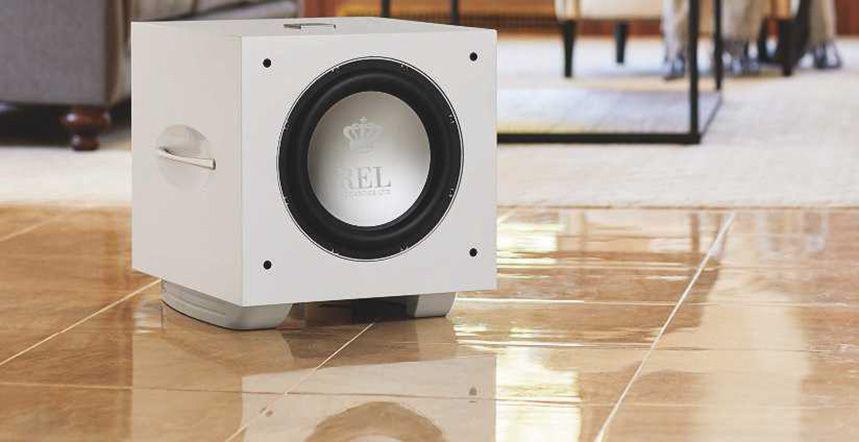
Subwoofer specialist REL has launched two new models in its mid-range Serie S stable, deploying filter-down tech from its reference-level products and introducing a ‘stackable’ rail design to let bass-heads go bigger.
The larger of the two new woofers is the S/812, which features a front-firing 12in ContinuousCast Alloy Cone driver and down-firing 12in carbon passive radiator. The smaller S/510 deploys a 10in active driver, but retains the 12in radiator.
Upgrades over the previous Serie S driver design include rear-mounted carbon fibre bracing to stiffen the cone, while REL says it has also improved the speed and precision of its subs’ output via tweaks to filtering.
Power pusher
To drive its 12in woofer, the S/812 uses a NextGen5 amplifier, technology previously found in REL’s dual-driver 212/SE and rated in excess of 1,000W peaks. For the S/510, a 500W NextGen3 amp is used.
Says REL: ‘The increased power is needed to handle the special filters first used in our HT/1508 [see HCC #296], custom versions of which now tailor the .1/LFE output channel of the new Serie S. These filters result in almost twice the output below 40Hz.’
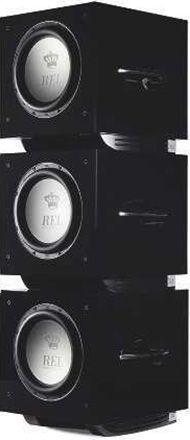
Both new subs swap out REL’s traditional chunky four-corner feet for rails that not only give them a ‘floating’ appearance, but allow up to three to be stacked vertically via supplied metal plates. ‘This new feature will open up REL line arrays to a new audience at about half the price of our Reference [models].’
Another typical REL feature is simultaneous connections. Both the S/510 and S/812 offer high-level Neutrik Speakon connectors, plus low-level L/R phono input, LFE phono input and LFE XLR input.
The subs are available in gloss white and gloss piano black finishes, and are compatible with REL’s wireless AirShip connection system.
Says REL of its new subs: ‘We have overlooked nothing, have approached every detail as fresh, with a singular focus on every possible aspect of performance and design.’
The new Serie Scan be vertically stacked
Point of View
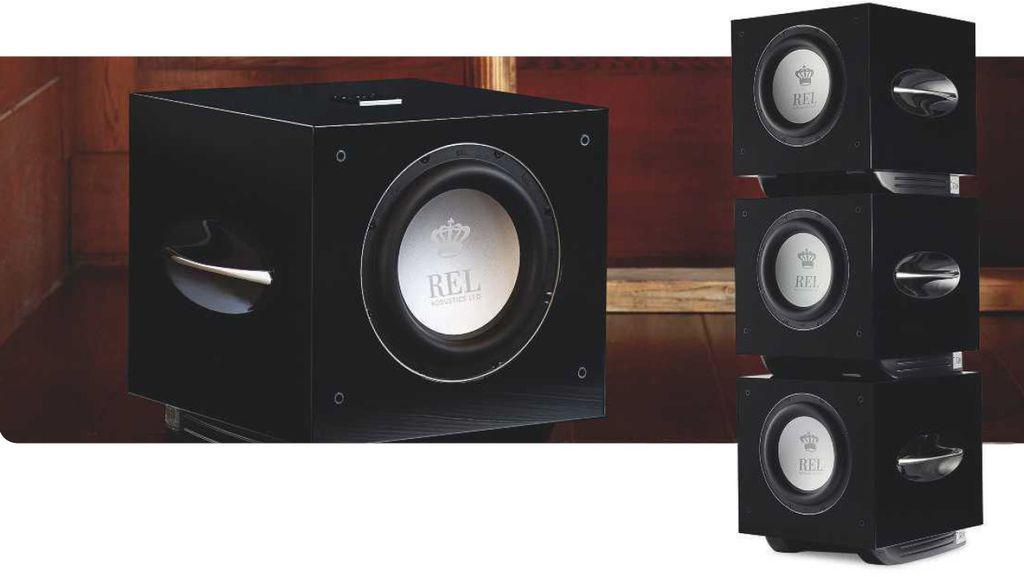
YOU HAVE GOT to love a bit of audiophile madness. Like any radical thinking, the resulting conclusion can be inspirational and world-changing, or more likely a whole crock of shucks. Over the last three decades I have embraced the sublime and often ridiculous in the pursuit of sonic perfection. Mad cables, outrageous room-tuning ideas and wobbly after-market equipment supports, made out of rubber hand-rolled in ambrosia on a maiden’s thigh.
And I don’t go anywhere near the fringes of the game. That’s all crystals strategically placed around, resonance-regulating wooden blocks and ensuring your speaker cables run at right angles to the earth’s magnetic field.
The recent Bristol Hi-Fi Show (see p20) doesn’t seem to countenance as much of this madness as it once did. That was until I walked into REL’s room to see company MD John Hunter demonstrating a stereo line array of REL S/510 subwoofers. One subwoofer in the home might seem enough for, say, George Lucas, Dolby or DTS, but REL’s take is a stack of three, each side. They were partnering a pair of KEF Reference standmount speakers that looked, well… nervous.
I was aware of REL’s ‘line array’ concept but I hadn’t heard it in action and assumed it was largely an innovative way for REL to sell more subwoofers. No one mentioned anything about thighs being involved, but I could almost smell the custard. So here is the theory…
Two to tango
A stereo pair of subs makes some sense for stereo listening, because it saves all that merging signals and trying to fool your brain into not knowing where the predatory T-Rex is coming from. They are usually a lot easier to integrate into a room and can boost your peak SPL too, raising it by around 3dB over a single unit. And they can subjectively sound faster as you don’t have to rely on sluggish room gain for prodigious output. I can vouch for all of that.
REL’s line array concept is not simply replicating the gain, roll-off and phase settings of each sub in each stack. Oh no. It’s a building game, starting with the lowest layer and adjusting the tuning to make the most of the floor gain for those deep LFE explosions. The next layer is independently dialled into the room, benefitting from less floor gain, which in turn affords faster LF transients for more slam. The third layer, ear height or above by now, is independently tuned again, having almost no boundary gain and copious free space in which to create a room-filling three dimensional LF sound experience.
The result, says John Hunter, is, ‘Open, effortless soundstaging, speed, delicacy, slam, warmth, body, holographic imaging, and movie sound that rises to and fills the entire height of the screen.’
The hotel bedrooms used at the Bristol Show are cramped, with bass-trap corridors, full-width bass-transparent windows and sound-deadening audiophiles. You would have trouble creating a trickier room for good bass without a vacuum chamber. It’s bloom or bust.
Except in REL’s room. The imposing visual presence of six S/510s in two stacks towering above KEF’s finest was matched by sublime bass. It was detailed, powerful, enveloping and – most impressively considering the room – spectacularly tight and well controlled.
That sound you can hear is my brain whirring into action as I contemplate my own subwoofer Jenga. Or possibly a rumble from BS1 3AD…




